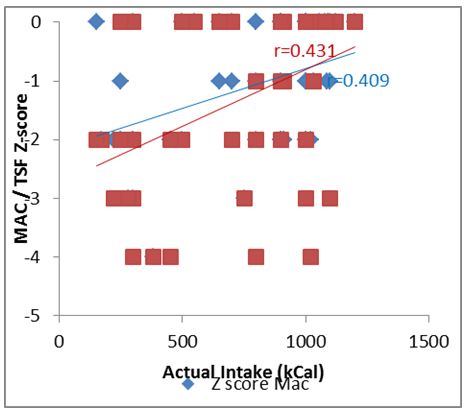
Pooja Goyal
Postgraduate Institute of Medical Education and Research, India
Title: Nutritional Assessment in Children with Chronic Liver Disease
Biography
Biography: Pooja Goyal
Abstract
Statement of the Problem: Children with chronic liver disease (CLD) are at high risk for malnutrition and so nutritional deficiencies are common in them. Protein and energy intake is inadequate because of anorexia, early satiety and therefore nutritional assessment is important in detecting and monitoring treatment of malnutrition.
Objective: The purpose of this study was to determine dietary intake and nutritional status in children with CLD.
Methodology & Theoretical Orientation: We studied 49 children of age group 3-60 months suffering from CLD. Their intake by three day dietary recall method and anthropometric measurements including weight, height, triceps skin fold (TSF), mid arm circumference (MAC) was measured by standard scales. Wherein arm muscle area (AMA) and arm fat area (AFA) were calculated by measuring TSF and MAC.
Findings: Calorie deficiency was more pronounced in neonatal cholestasis (46%) and protein deficiency was pronounced in cirrhosis (74%) (p<0.001). The anthropometric analysis was done with mean Z score. Weight for age was more depressed in cirrhosis (-1.83±0.76) and least depressed in others (-0.20±0.44) (p value=0.19). Height for age was more depressed in biliary atresia (BA) (-2.20±1.30) and least depressed in autoimmune hepatitis (AIH) (0.00±2.12) (p value=0.58). Weight for height was more depressed in neonatal cholestasis (-1.17±1.32) and least depressed in others (-0.20±0.44)(p value=0.31). Z score for MAC and TSF were also analyzed. MAC was more depressed in BA (-1.80±1.78) (p value=0.53). TSF was significantly depressed in all of CLD patients (p value=0.04).
Conclusion: Nutritional intake in CLD was grossly inadequate in neonatal cholestasis (including BA) than other CLDs. Inadequate diet and poor nutritional status were the main cause of underweight and stunting in children with CLD. TSF thickness was significantly depressed in all of CLD patients. There is need of proper nutritional therapy, so individualized approach should be planned for nutrition support and management of specific liver disease patients.
Figure 1: Relationship of Z scores for MAC and TSF thickness between actual intakes of children with CLD. A significant relationship (p<0.05) was demonstrated (r=0.409 p=.003, r=0.431 p=.002).


